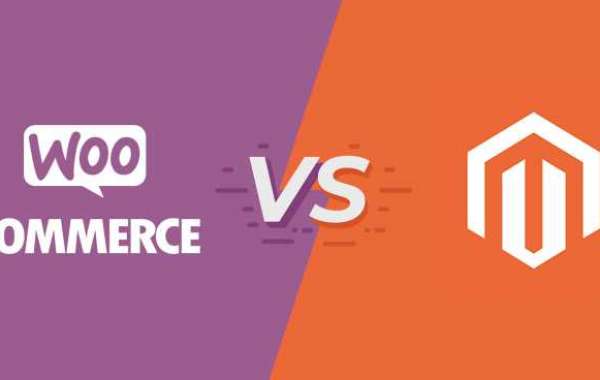When it comes to building an online store, selecting the right e-commerce platform is a crucial decision. Two popular options that often come up in discussions are Magento 2 and WooCommerce. Both platforms have their strengths and cater to different needs. In this blog post, we will explore the key differences between Magento 2 and WooCommerce, providing you with valuable insights to help you make an informed choice.
- Complexity and Scalability:
One fundamental distinction between Magento 2 and WooCommerce lies in their complexity and scalability. Magento 2 is a robust and feature-rich platform designed to handle large-scale e-commerce operations. It offers a wide range of functionalities, including multi-store management, advanced inventory management, and complex product catalogs. However, this complexity also means that Magento 2 requires more technical expertise to set up and maintain.
On the other hand, WooCommerce, which is a plugin for WordPress, is comparatively simpler and easier to use. It seamlessly integrates into WordPress websites, making it an excellent choice for small to medium-sized businesses. While WooCommerce is highly customizable, its scalability might be limited for businesses with rapidly growing product catalogs or high traffic volumes.
- Flexibility and Customization:
Both Magento 2 and WooCommerce offer a considerable level of flexibility and customization options, but they differ in their approaches. Magento 2 provides extensive out-of-the-box features, allowing businesses to create complex online stores tailored to their specific needs. It offers a wide array of extensions, themes, and plugins, enabling businesses to customize their stores extensively. Magento's modular architecture ensures high flexibility, but it comes at the cost of a steeper learning curve for developers.
In contrast, WooCommerce provides a more streamlined and user-friendly experience for customization. It benefits from the vast ecosystem of WordPress plugins and themes, making it highly adaptable to various business requirements. While WooCommerce may not match Magento 2's complexity, it compensates with its simplicity, ease of use, and quick setup process.
- Cost and Budget:
Cost is a significant factor for any business decision. When comparing Magento 2 and WooCommerce, it is essential to consider both initial and ongoing expenses. Magento 2 is an enterprise-level platform that often requires a substantial investment upfront. Licensing fees, hosting costs, and development expenses can make it a costly choice, especially for smaller businesses. Additionally, Magento 2's complex infrastructure may require dedicated hosting, which further adds to the expenses.
In contrast, WooCommerce is more cost-effective, especially for businesses already using WordPress. Since WooCommerce is an open-source plugin, it is free to install. However, additional costs may arise from premium themes, extensions, hosting, and security. Nevertheless, overall, WooCommerce is typically more budget-friendly, particularly for startups and small businesses.
- Community and Support:
Both Magento 2 and WooCommerce benefit from thriving communities, providing valuable resources, plugins, and support. Magento has a dedicated community of developers and experts who actively contribute to its ecosystem. It has a vast marketplace with a wide range of plugins and extensions. Moreover, Magento offers comprehensive documentation, forums, and official support channels.
WooCommerce, being part of the WordPress ecosystem, benefits from the large WordPress community. It has an extensive library of plugins and themes available through the official WordPress repository. The community actively contributes to its development, ensuring regular updates, security patches, and support forums.
Conclusion: Choosing between Magento 2 and WooCommerce ultimately depends on the unique requirements and goals of your online store. If you have a large-scale operation and require advanced features and scalability, Magento 2 might be the preferred choice. On the other hand, if you prioritize simplicity, quick setup, and seamless integration with WordPress, WooCommerce can be an excellent option, particularly for smaller businesses. Consider your budget, technical expertise, customization needs, and growth plans to make an informed decision. Regardless of the choice, both platforms have proven themselves as reliable e-commerce solutions in their respective domains.








